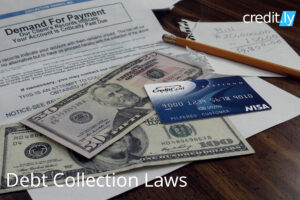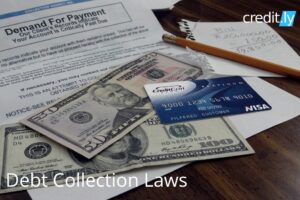[et_pb_section fb_built=”1″ _builder_version=”3.22.3″][et_pb_row _builder_version=”3.25″ background_size=”initial” background_position=”top_left” background_repeat=”repeat”][et_pb_column type=”4_4″ _builder_version=”3.0.47″ custom_padding=”|||” custom_padding__hover=”|||”][et_pb_post_title _builder_version=”3.26.6″ title_font=”|700|||||||” title_line_height=”2em” z_index_tablet=”500″ title_text_shadow_horizontal_length_tablet=”0px” title_text_shadow_vertical_length_tablet=”0px” title_text_shadow_blur_strength_tablet=”1px” meta_text_shadow_horizontal_length_tablet=”0px” meta_text_shadow_vertical_length_tablet=”0px” meta_text_shadow_blur_strength_tablet=”1px” box_shadow_horizontal_tablet=”0px” box_shadow_vertical_tablet=”0px” box_shadow_blur_tablet=”40px” box_shadow_spread_tablet=”0px” text_shadow_horizontal_length_tablet=”0px” text_shadow_vertical_length_tablet=”0px” text_shadow_blur_strength_tablet=”1px”][/et_pb_post_title][et_pb_text _builder_version=”3.29.2″ z_index_tablet=”500″ text_text_shadow_horizontal_length_tablet=”0px” text_text_shadow_vertical_length_tablet=”0px” text_text_shadow_blur_strength_tablet=”1px” link_text_shadow_horizontal_length_tablet=”0px” link_text_shadow_vertical_length_tablet=”0px” link_text_shadow_blur_strength_tablet=”1px” ul_text_shadow_horizontal_length_tablet=”0px” ul_text_shadow_vertical_length_tablet=”0px” ul_text_shadow_blur_strength_tablet=”1px” ol_text_shadow_horizontal_length_tablet=”0px” ol_text_shadow_vertical_length_tablet=”0px” ol_text_shadow_blur_strength_tablet=”1px” quote_text_shadow_horizontal_length_tablet=”0px” quote_text_shadow_vertical_length_tablet=”0px” quote_text_shadow_blur_strength_tablet=”1px” header_text_shadow_horizontal_length_tablet=”0px” header_text_shadow_vertical_length_tablet=”0px” header_text_shadow_blur_strength_tablet=”1px” header_2_text_shadow_horizontal_length_tablet=”0px” header_2_text_shadow_vertical_length_tablet=”0px” header_2_text_shadow_blur_strength_tablet=”1px” header_3_text_shadow_horizontal_length_tablet=”0px” header_3_text_shadow_vertical_length_tablet=”0px” header_3_text_shadow_blur_strength_tablet=”1px” header_4_text_shadow_horizontal_length_tablet=”0px” header_4_text_shadow_vertical_length_tablet=”0px” header_4_text_shadow_blur_strength_tablet=”1px” header_5_text_shadow_horizontal_length_tablet=”0px” header_5_text_shadow_vertical_length_tablet=”0px” header_5_text_shadow_blur_strength_tablet=”1px” header_6_text_shadow_horizontal_length_tablet=”0px” header_6_text_shadow_vertical_length_tablet=”0px” header_6_text_shadow_blur_strength_tablet=”1px” box_shadow_horizontal_tablet=”0px” box_shadow_vertical_tablet=”0px” box_shadow_blur_tablet=”40px” box_shadow_spread_tablet=”0px”]
Let’s talk about the awful truth about credit. Most people have a gut feeling about their credit – it’s either great, good or bad. But what is a bad credit score really? First, it’s important to understand that there are many different credit scoring models out there and each may use a different scale – or numbers – to convey information.
Still, in the lending world, some assumptions can be made about credit scores that fall into different ranges — and, as such, what score may qualify as “bad.”
For instance, most major credit scoring models follow a number system. A 300 to 850 range (the lower the score, the worse for wear, but more on this in a minute), and, while you’re looking at a score measured this way, you can generally assume anything below 600 is a negative credit score.
Here are how the basic credit tiers typically work out:
- Perfect / Exceptional Credit: 800+
- Excellent Credit: 750+
- Good Credit:700-749
- Fair Credit:650-699
- Poor Credit:600-649
- Bad: below 600
Let’s take a deeper dive into what constitutes a bad credit score.
Who Decides if a Credit Score Is ‘Bad’ – ‘Good’ – ‘Fair’?
Who is in charge of calculating your credit score? As we mentioned, credit score ranges can vary by model. For example, all FICO scores range between 300 and 850 with 300 being the lowest (or worst) possible score, while 850 is the highest (or best) possible score. The range for VantageScore 2.0 credit scores is between 501 and 990, with the higher number representing the strongest score. But its newer version, VantageScore 3.0, has a range of 300 to 850.
Now, the companies that develop credit scores – FICO and VantageScore, for example – do not decide which credit scores are technically “good” or “bad.” Nor do the credit reporting agencies that supply the credit reports used to create credit scores.
Let’s face it, you are at their mercy. It’s up to individual lenders and insurance companies who use these scores to decide which scores demonstrate an acceptable level of risk. They use scores in a variety of ways, too.
Here’s what they look at to decided if you are a stud or a credit dud – These include:
- Determining the interest rate they will charge for a loan, or in the case of an insurance company, the discount they may offer on an insurance policy.
- Deciding whether to extend credit, how much credit to approve, whether to increase (or lower) a customer’s credit limit or even to close a risky account.
In a way, then, there is no such thing as a “bad credit score,” since the number itself doesn’t mean anything until a lender decides how to use it. In other words, a credit score is only bad when it keeps you from whatever you are trying to accomplish, whether that is to refinance a loan, borrow at a low-interest rate, or get the best deal on your auto insurance.
Moreover, what is considered bad credit by one lender may be perfectly acceptable to another. For example, with many mortgages, the minimum score required may be a 620, while some credit card issuers offering low-rate cards may reject applicants whose scores are lower than say 680.
Find Out Where You Stand – Are Your Credit Worthy?
It’s not just you, so don’t feel bad. Most people are saddled with negative credit scores. According to a 2015 analysis of VantageScore 3.0 data, almost 30% of Americans have poor or negative credit (defined here as a score lower than 601). That 30% amounts to about 68 million of the 220 million score-able people out there, VantageScore says.
Keep in mind; it’s possible to have bad credit and not even know it. That’s why you’ll want to keep a close eye on your credit. You can check your credit score using Creditly’s free Credit Report Card. Make sure to check your credit at all three of the major credit bureaus.
This completely free tool will break down your credit score into sections and give you a grade for each. You’ll see, for example, how your payment history, debt, and other factors affect your score, and you’ll get recommendations for steps you may want to consider to address problems.
In addition, you’ll also find credit offers from lenders who may be willing to offer you credit. Checking your own credit reports and scores does not affect your credit score in any way.
You can start taking your credit score from “bad” to “good” by disputing errors on your credit report, paying down excessively high debts and limiting new credit inquiries.
Credit Score Factors That Make or Break the Mold
If you feel that your credit score is far below where you want it to be and want to see a vast improvement, the following are a few things you should take into consideration when trying to build a good credit score:
Payment History: make sure to pay all your bills on time each month, and you will begin to see a positive impact on your credit score.
Credit Utilization Rate: keep the credit utilization rate below the thirty percent mark. You can improve this ratio by paying down credit card balances.
Credit History: look at the type of debt and type of credit you have and how long you have had them. Make sure you have a good mix of credit rather than just a few credit cards.
Is 620 a Good Credit Score?
As already mentioned, credit scores can be deemed bad, fair, or good directly by the lenders. However, there are still a few things a credit score of 620 might be able to get you even if some lenders consider it “poor.”
- Can I qualify for any kind of credit card? No
- Can I get a credit card with no annual fee and 0% financing? Possibly but depends on the lender.
- Can I get a personal loan with a credit score of 620? Possibly but it depends on the lender.
- Can I get a store credit card with a credit score of 620? Most likely, you can.
- Can I find the best and lowest mortgage rates with a 620 score? No.
- Can I find a credit card with a big sign up bonus? Not likely.
How to Improve Your 620 Credit Score
If you are not happy with the answers to the above questions, you should consider the different ways you can begin to improve your 620-credit score.
- Keep your hard inquiries under the mark of three for the past two years
- Lower your overall credit utilization rate
- Maintain a 100% on-time payment history
- Keep a low debt-to-income ratio
- Have a diverse mix of credit accounts on your credit reports
The Terrible Side Effects of Bad Credit
When you are saddled with a negative credit score, you will essentially end up paying more in fees and interest and other charges. Remember, the higher the number, the better your credit score will be.
If you do have negative credit, you may find that you are often maxing out your credit cards and you may also find that you are not paying your bills on time. Your payment history accounts for a sizable portion of your credit score and your credit report, and it can have a negative impact on your credit.
With a negative credit score and a score of lower than 620, you will find:
- You are getting denied for credit and loan applications. The lenders are looking at you as high risk and will not extend credit to you with a poor credit score.
- You will have higher interest rates on any loans you are able to secure. A negative credit score costs you money in the long run.
- You may even find it difficult to get approved for an apartment or home. Landlords often check potential tenants credit scores to help them determine if they will pay their rent on time.
- You may find that you have to pay higher security deposits on your utility accounts
- You may be denied employment in the finance industry or even an upper management position because of your poor credit history. Negative items on your credit report can play a substantial role in your life- especially if there has been a bankruptcy or your debts are in the higher numbers
- You may experience higher insurance premiums because some insurance companies link a lower credit score to higher claims being filed
Stuck with No Credit Score and Need a Credit Card? – Here’s What You Can Do –
Scenario—you have no real credit history, so you don’t have much of a credit score or have a bad or fair credit score. But, you also are financially savvy. You just need to build some credit or improve the score you’ve got.
A 620-credit score may be an average score, but many lenders are still considering it on the poor side and with so many credit score ranges, you will find it best to do what you can to get your credit score as high as you can and improve your credit. Don’t settle for minimum credit or average credit.
To combat the effects of poor or negative credit, you should monitor your credit reports, dispute any errors, and find ways to improve your current credit standing. By doing so, you will find that you have much better luck in the future when you try to secure a mortgage loan, auto loan, or any other type of loan or line of credit. Find at more at Creditly, check out the Credit Resources page.
[/et_pb_text][/et_pb_column][/et_pb_row][/et_pb_section]









